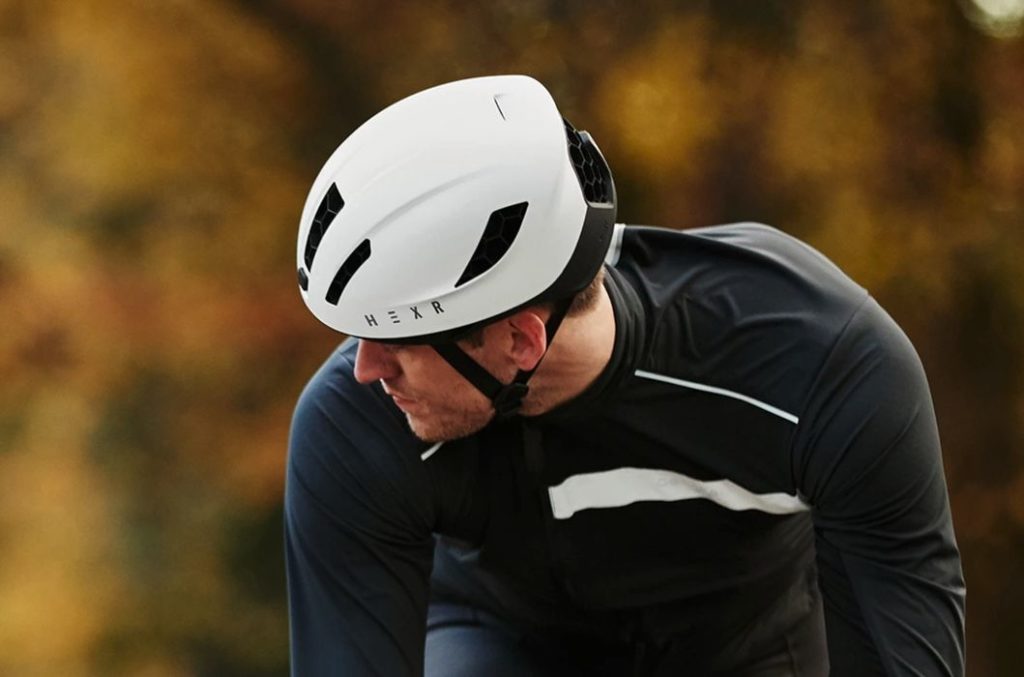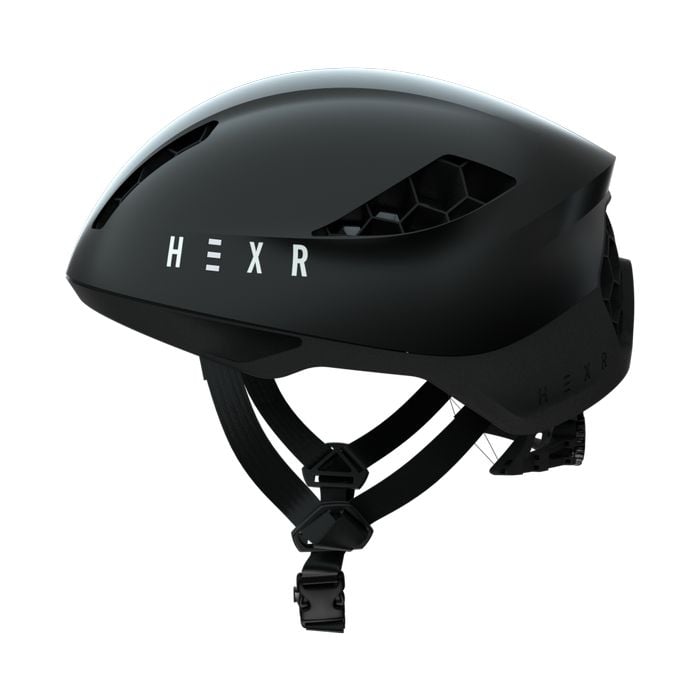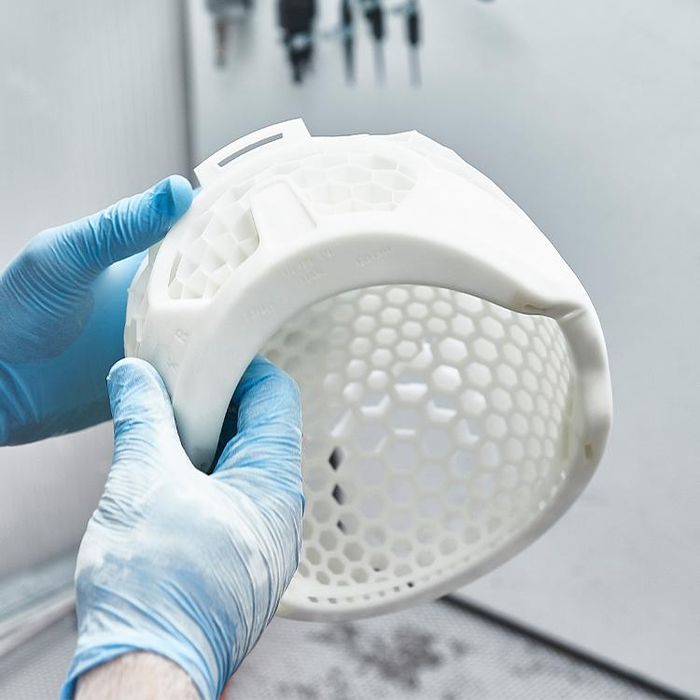
HEXR could be the example of how to use 3D print technology for personalized products.
The UK-based company produces custom-made, 3D printed bike helmets. These are individually generated to precisely fit the dimensions of the wearer.
The company was conceived by co-founder Jamie Cook while doing materials research at UCL and later Oxford. He realized that hexagonal cells can provide significantly more strength versus conventional foams.
3D Modeled Helmets

With a 3D modeling approach, cells could be engineered to provide maximum strength for particular situations, whereas foam is a uniform material that doesn’t have as many ways to control its function. (Unless it’s Digital Foam.)
This knowledge was then combined with the idea of a customized bike helmet. If head dimensions could be captured, they could be processed into a 3D model of a bike helmet.
After extensive testing, including apparently 3200 separate tests, HEXR was able to develop a fully functional and personalized bike helmet system.
The bike helmet consists of two parts:
- A “core” containing the hexagonal cell matrix that provides the safety feature
- A “shell” that covers the core and provides wind resistance and an attractive look
There are several advantages to this approach to bike helmets. First, the helmet is safer. HEXR said the helmet provides 26% greater protection from brain injuries. Secondly, the cellular design allows for far greater airflow, making for a cooler head during heavy biking. Finally, the helmet is lighter than typical bike helmets, something always desirable when biking.
But how are the dimensions collected for processing?
3D Scanned Helmets

HEXR has developed a smartphone app that can do this through 3D scanning. Their app uses photogrammetry (through the AliceVision engine), and should work fine on any smartphone with a camera: no fancy 3D depth cameras are required.
During 3D scanning, the subject must wear a special cap to hold down hair, which can be in a structure that would hide the skull’s shape. HEXR’s 3D model generation software is able to create a small gap between the helmet and head to account for head expansion when hot.
Once the dimensions are submitted, HEXR can begin 3D printing the core of the helmet. This is done using EOS SLS equipment, with PA11 powder material. This is a material commonly used for end-use consumer 3D printed applications, and is certainly strong enough for this helmet.

After the core is completed, then the shell is prepared and you then have a fully personalized bike helmet, ready for shipment.
The HEXR helmet can be ordered for £299 (US$417), which is quite a bit more than ordinary bike helmets, but provides many advantages.
HEXR also sells an advanced helmet design for competitive track racers, the P5. It’s priced at £749 (US$1046).
HEXR’s automated approach seems quite scalable, and thus they are positioned to grow their business as more cyclists become interested in advanced products.
The HEXR helmet is expensive, to be sure, but that’s how new technologies often appear in the market: the cost required to launch a new approach is paid by the initial buyers of the advanced product. As the product scales, less complex versions become available at lower prices to increase sales.
If we expect to see a future where most wearable consumer products are personalized, this is a big step in that direction.
Via HEXR
